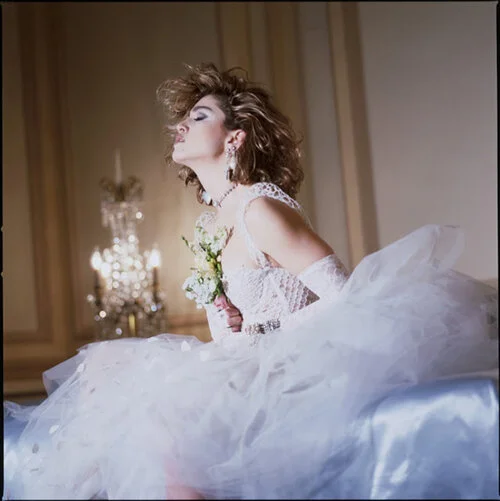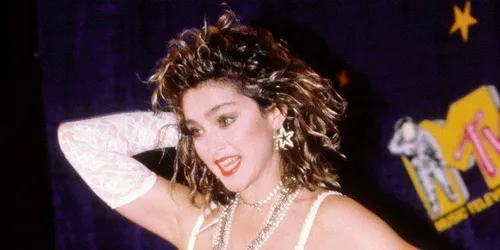Madonna's Like A Virgin Album - The Ultimate Guide
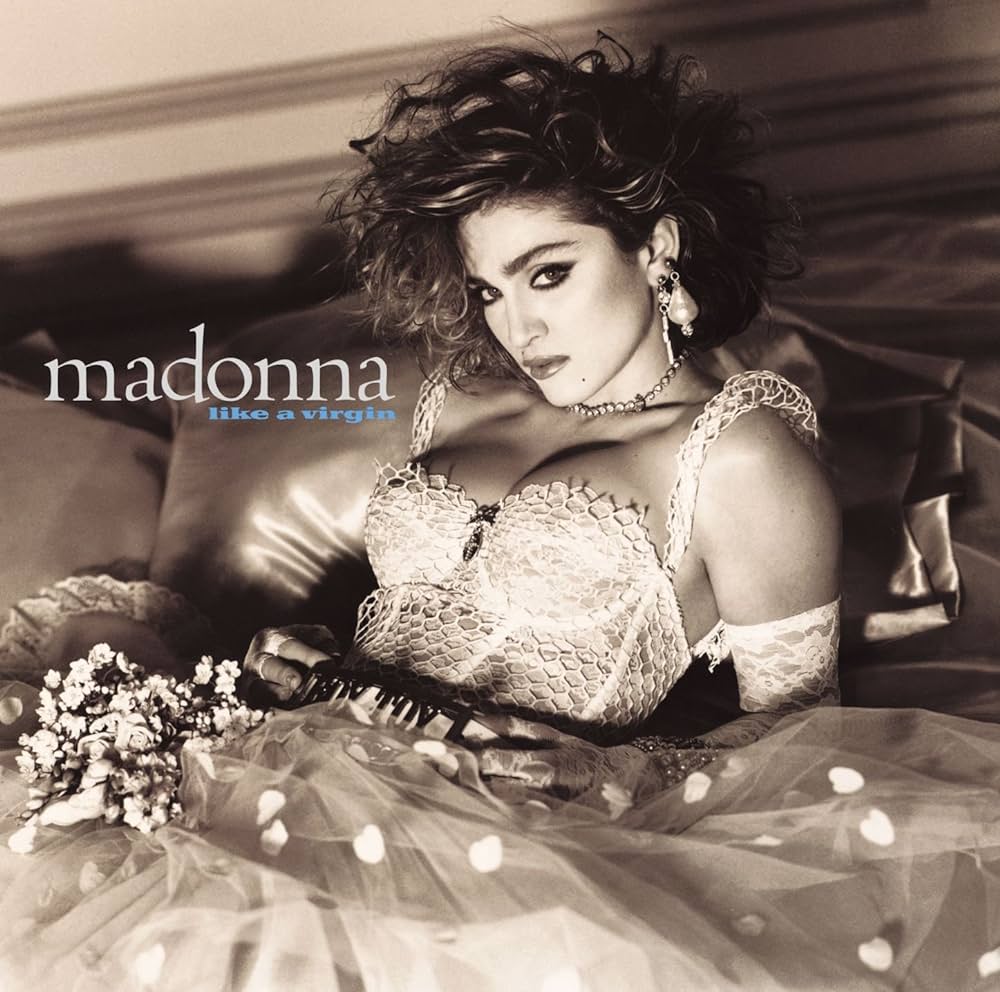
Madonna's Like A Virgin album is the LP that took her from pop star to unstoppable juggernaut. Here's Madonna's Like A Virgin - The Ultimate Guide!
Introduction: The Album That Turned Madonna Into Madonna™
In 1983, Madonna was a rising star with a scrappy self-titled debut, a pair of undeniable hits, and a whole lot to prove. By the end of 1984? She was Madonna. Capital M. Household name. Pop juggernaut. Controversial. Visionary. Unstoppable. And it all changed with Like a Virgin. So here it is - Madonna's Like A Virgin album - The Ultimate Guide!
Released on November 12, 1984, Like a Virgin wasn’t just an album - it was a cultural detonation. Teaming up with Chic’s Nile Rodgers, Madonna traded the raw, clubby energy of her debut for polished pop precision - and in doing so, she hit the mainstream like a wrecking ball in lace gloves. The album didn’t just top charts; it topped conversations. School principals banned her. Parents panicked. MTV couldn’t stop playing her. And Madonna? She danced right through it all, unapologetically.
With Like a Virgin, Madonna went from promising downtown artist to pop’s reigning provocateur—and she did it on her own terms. This album launched a thousand imitators, defined an era, and gave us some of the most iconic looks, performances, and pop moments of the 1980s.
So grab your Boy Toy belt, fluff up your veil, and cue the synths - we’re diving deep into the album that crowned Madonna the Queen of Pop.
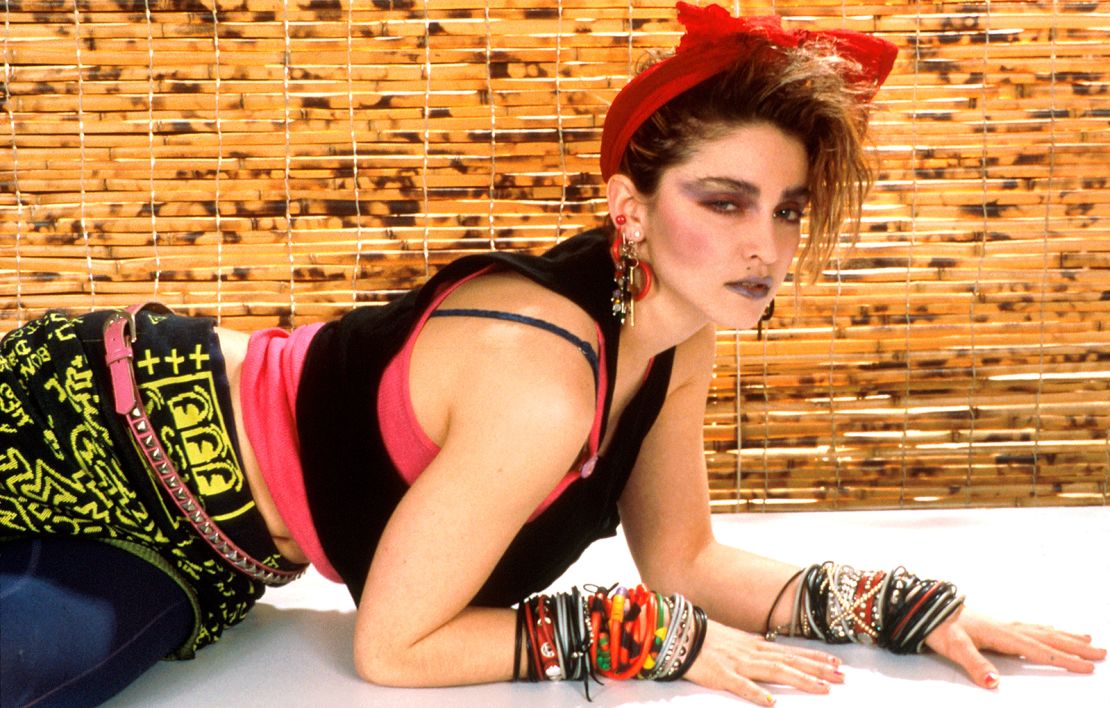
Background & Recording: A Pop Star Meets Her Producer Prince
After the success of her debut, Madonna wasn’t just looking to replicate her sound—she wanted to level up. She knew she needed a producer who could give her the gloss and groove to compete with the big leagues. Enter: Nile Rodgers, the legendary guitarist and co-founder of Chic, who had recently produced David Bowie’s Let’s Dance. Madonna saw that album and said, “Yeah, I want that.”
Despite some resistance from her label - who thought Rodgers was too high-profile for a second-time artist - Madonna was insistent. And Nile? He was intrigued. He later said he signed on because he saw her drive and knew she was going to be a force. Spoiler alert: he was very, very correct.
Recording sessions took place at Power Station Studios in New York City, a hotbed for major albums of the era. Madonna brought in a handful of songs she’d written with collaborators like Stephen Bray and John “Jellybean” Benitez, but Rodgers wanted more cohesion. He helped shape the album’s sonic identity by bringing in Chic’s Bernard Edwards on bass and Tony Thompson on drums - essentially, half of Chic backing the next queen of pop. Not a bad move.
Interestingly, Like a Virgin would mark the first time Madonna didn’t have full control over every aspect. While her debut album was built around songs she’d been performing and shaping for years, this time she was stepping into the big-league studio system. That meant collaborating with songwriters and playing in Nile’s sandbox. She may not have written “Like a Virgin” herself (that was Billy Steinberg and Tom Kelly), but she owned it the second she opened her mouth. Same with “Material Girl,” which she took from songwriter Peter Brown and made her legacy.
This era marked the beginning of Madonna the strategist - choosing collaborators who could amplify her vision and packaging it all with sharp instincts, even if it meant ceding some control. She wasn’t just making an album - she was making a moment.

Composition & Sound: Polished Pop With a Razor-Sharp Edge
If Madonna’s debut album was a dance-floor invitation, Like a Virgin was the main event. Gone were the raw, freestyle-inflected synths of Madonna - in their place was a tighter, cleaner, and more radio-ready sound, thanks in no small part to Nile Rodgers’ signature production style. The result? A slick, slinky, neon-drenched pop record that still manages to pulse with edge and attitude.
Drawing from dance-pop, post-disco, new wave and a touch of retro girl-group charm, Like a Virgin is the sound of 1984: bold, synthetic and unapologetically glossy. Rodgers’ influence is all over the place - funky guitar licks, propulsive basslines and polished arrangements that somehow made room for Madonna’s still-slightly-raspy vocals to cut through with precision.
But don’t let the sheen fool you - this wasn’t bubblegum. Underneath the surface, Like a Virgin is full of contradictions: vulnerability cloaked in confidence, innocence dripping in irony, love songs laced with power plays. Whether she’s calling the shots as a “Material Girl” or throwing herself into Over and Over’s defiant optimism, Madonna uses her voice less as a technical powerhouse and more as a sharp, stylized weapon.
Lyrically, the album dances between themes of sexual liberation, ambition, emotional longing and self-definition - all recurring threads in Madonna’s career, but here they’re framed with a youthful spark that feels both cheeky and revolutionary. And let’s be real: no one else in 1984 was topping charts by claiming to feel “shiny and new” like a virgin on national television.
Musically, each track offers something a little different:
•The title track shimmers with bright synths and a hook so infectious it practically became its own religion.
•“Material Girl” plays like a Marilyn Monroe homage with a capitalist twist.
•“Shoo-Bee-Doo” dips into retro balladry, while “Stay” and “Pretender” double down on mid-tempo dance grooves that still feel like roller rink anthems.
•And “Into the Groove,” though added only to international reissues, remains one of her most iconic songs, period.
Like a Virgin wasn’t just well produced - it was smartly produced. It let Madonna’s personality do the heavy lifting while dressing it up in sonic textures that felt cutting-edge at the time and still somehow timeless today. It’s proof that Madonna didn’t just have an image - she had the sound to back it up.

Artwork & Release: A Bridal Gown, a Belt, and a Statement Heard ’Round the World
If you had to sum up the Like a Virgin era in one image, it’s the album cover: Madonna, draped in layers of lace, sprawled across a bed in a wedding dress, staring straight at the camera with that very specific mix of defiance, desire, and “what are you gonna do about it?” Oh and of course - the now-iconic “Boy Toy” belt. Subtle? No. Effective? Absolutely.
Shot by legendary fashion photographer Steven Meisel, the cover of Like a Virgin is pure pop provocation. Madonna isn’t a blushing bride; she’s the one in control of the narrative, reclaiming imagery that’s historically been used to suggest purity and submission and twisting it into something far more powerful - and far more Madonna.
She later said that she chose the wedding theme precisely because of its cultural baggage. In her own words, it was “a statement of independence… a woman owning her sexuality, not giving it away.” Whether people got the nuance or not, the impact was immediate. Parents gasped. The media panicked. Teenagers plastered their walls with it.
The album was originally scheduled for a late summer 1984 release, but the runaway success of singles like “Borderline” and “Lucky Star” from her debut kept that album on the charts far longer than expected. Warner Bros. wisely waited for the dust to settle before dropping Like a Virgin - and when they did, they dropped it like a bomb.
Like a Virgin hit stores on November 12, 1984, just weeks before Madonna’s now infamous MTV VMAs performance would launch the title track into orbit. Internationally, the album saw several variations - most notably in territories like Europe and Australia, where later editions included “Into the Groove,” a song that would go on to become one of Madonna’s biggest global hits despite not being included on the original U.S. release.
Everything about the album’s release was calculated and chaotic, which somehow made it even more Madonna. From the bridal marketing aesthetic to the carefully orchestrated rollout of singles, Like a Virgin was designed to stir the pot - and sell millions while doing it. Mission accomplished.
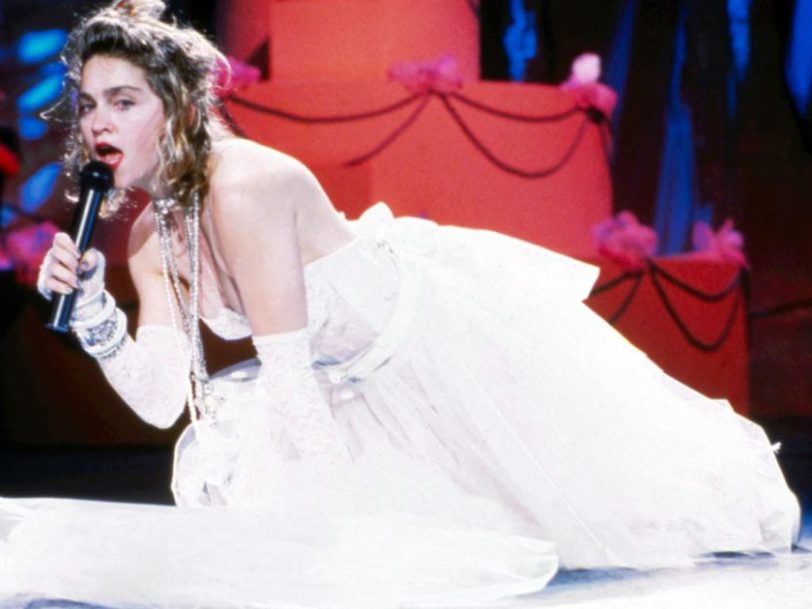
Promoting Like A Virgin: The Wedding Cake Heard ‘Round the World
You can’t talk about Like a Virgin without talking about the 1984 MTV Video Music Awards. Madonna didn’t just perform - she hijacked the pop culture consciousness in a lace bustier, writhing atop a giant wedding cake while lip-syncing “Like a Virgin” and rolling around in a way that made America collectively clutch its pearls. It was scandalous. It was brilliant. It was Madonna doing what Madonna does best: turning controversy into currency.
The performance aired just weeks before the album dropped and it was all anyone could talk about. Parents freaked out, church groups staged protests and teenagers couldn’t get enough. Madonna later said that the infamous moment where her shoe fell off and she dove to the floor to recover actually sparked the now iconic roll-and-thrust move. A literal accident became a defining pop culture moment. Classic Madonna.
And the promo didn’t stop there. The album’s rollout included a parade of hit singles, each with their own highly stylized - and highly watched - music videos:
•“Like a Virgin” featured Madonna in Venice, floating down canals in a gondola while nuzzling a lion. Because… of course.
•“Material Girl” recreated Marilyn Monroe’s “Diamonds Are a Girl’s Best Friend” number from Gentlemen Prefer Blondes, complete with pink satin, backup dancers, and a knowing wink that said, “Yeah, I know exactly what I’m doing.”
•“Angel” and “Dress You Up” got more low-budget treatment but still became radio and MTV staples.
•Later, “Into the Groove” (from the Desperately Seeking Susan soundtrack) was released as a standalone single in some countries, complete with a promo video cobbled together from movie footage - and it still became a massive global smash.
Then there was The Virgin Tour - Madonna’s very first concert tour, launched in April 1985. Originally booked in theater-sized venues, demand was so intense that promoters had to upgrade to arenas almost immediately. Fans—mostly teenage girls dressed in lace gloves, rosaries, and teased out hair - showed up in droves. Madonna-mania was officially in full swing.
The tour grossed millions, sold out in minutes, and included a filmed performance at Detroit’s Cobo Arena that would become the HBO special Madonna Live: The Virgin Tour. It’s wild to think this was her first tour - she already had the stage presence of a seasoned veteran.
From magazine covers to TV appearances, Madonna made Like a Virgin impossible to ignore. She didn’t just promote an album - she launched a cultural tidal wave, fueled by sex, style and sheer audacity.

Critical Reception of Like A Virgin: Mixed Reviews, Maximum Impact
When Like a Virgin dropped in late 1984, the critics… didn’t quite know what to do with it. Or with her.
Some praised the production - because honestly, it’s hard to deny Nile Rodgers’ clean, punchy, radio-perfect polish. Others… were less impressed, especially with Madonna’s vocals. “Thin,” “limited,” and “overly processed” were common phrases tossed around. A few critics dismissed her entirely as a passing fad, a provocateur playing dress-up with nothing to say.
Oops.
And yet, even in the early reviews, there were hints that something bigger was happening. While some critics couldn’t see past the lace gloves and tabloid headlines, others picked up on the fact that Madonna had a vision - and the sheer willpower to make it reality. The New York Times noted her “total command of the commercial pop scene.” Rolling Stone (which had already taken potshots at her debut) grudgingly admitted Like a Virgin had undeniable hooks and staying power. Others pointed to her charisma, her instinct for image-making and her refusal to play by the rules.
But it wasn’t just about the music - it was about everything else. Madonna was polarizing. She made people uncomfortable. She wanted to make people uncomfortable. And in a time when pop stars were expected to smile, sing pretty, and behave, she strut onto the scene in a wedding dress and dared you to underestimate her. The album’s content, her live performances, and her fearless sexuality drew think pieces, moral outrage, and hand waving from media pundits who didn’t realize she was outsmarting all of them in real time.
Of course, in the decades that followed, the critical tide shifted. Today, Like a Virgin is widely recognized as the album that turned Madonna into a pop culture institution. It appears on countless best-of lists, is frequently cited as one of the definitive pop albums of the 1980s, and was even selected in 2023 for preservation in the U.S. National Recording Registry - cementing its status as a work of cultural, historical, and artistic significance.
So yes, the critics were split. But Madonna didn’t need their approval. She had the fans. She had the charts. And most importantly, she had the vision. Critics eventually caught up. As usual, she was already ten steps ahead.

Commercial Performance: Records Shattered, Legends Born
If the critics were slow to catch on, the public had no such hesitation. Like a Virgin wasn’t just a hit - it was a phenomenon. It didn’t climb the charts. It bulldozed them.
The album debuted modestly on the Billboard 200, but thanks to the instant success of the title track and an avalanche of media coverage (read: controversy), it shot to No. 1 in early 1985 - and stayed there for three weeks. It became the first album by a female artist to sell over 5 million copies in the U.S., a record that signaled just how much the music industry was about to change.
And that was just the beginning:
•In the United States, the album was eventually certified Diamond by the RIAA, with over 10 million copies sold.
•Worldwide? It has sold nearly 25 million copies, making it one of the best-selling albums by a female artist of all time.
•It hit No. 1 in major markets like Germany, Italy, Spain, and New Zealand, and was a Top 5 album in the UK, Canada, and Australia.
•Singles “Like a Virgin” and “Material Girl” both reached Top 5 on the Billboard Hot 100, with “Like a Virgin” becoming her first No. 1 single in the U.S., staying there for six weeks.
•The album’s re-release in international markets with “Into the Groove” added even more fuel to the fire - it topped charts globally and became Madonna’s biggest international hit at the time, even without a commercial U.S. single release.
Beyond sales, Like a Virgin changed the rules of pop music marketing. Madonna wasn’t just selling records - she was selling a world. The visuals, the performances, the merch, the magazine covers, the fan culture - it all translated into an empire in the making.
By the end of 1985, Madonna wasn’t just a pop star. She was a business. And Like a Virgin was the blueprint.
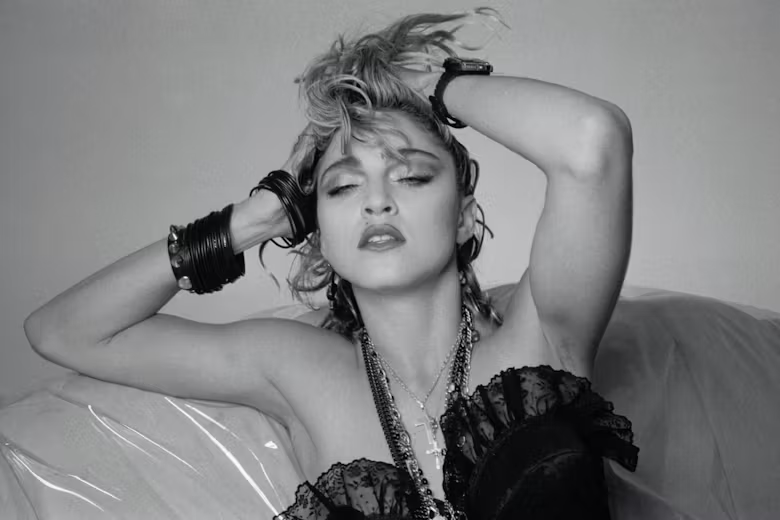
Legacy & Impact: How Like A Virgin Was The Album That Made Madonna a Movement
It’s hard to overstate what Like a Virgin did - not just for Madonna, but for pop music, fashion, feminism, and how female artists could operate in the spotlight. This wasn’t just an album; it was a seismic shift. A reset button. A glitter-bombed cultural reset wrapped in tulle and teased hair.
Before Like a Virgin, Madonna was a rising star. After Like a Virgin, she was Madonna™ - a singular brand, an icon in the making and a lightning rod for everything the 1980s loved and loathed. She wasn’t the girl next door. She was the girl you wanted to be, feared your daughter might emulate and couldn’t stop watching no matter what. And it all started here.
This was the moment she took control - not just of her image, but of the entire narrative. She wasn’t waiting to be discovered or validated. She was writing her own script, and the rest of the pop world scrambled to catch up. Everyone from Cyndi Lauper to Debbie Gibson to Janet Jackson to the future Britney, Christina, Gaga, Beyonce, Katy cohort would live in the shadow of the world Like a Virgin built.
Musically, it set the template for dance-pop dominance. Visually, it redefined what a pop star could look like: edgy, hyper-feminine, street-smart, unafraid to push buttons. Culturally, it sparked conversations about sexuality, image, power, and performance - conversations that Madonna would keep forcing us to have for the next four decades and going.
And then there’s the “Madonna Wannabe” effect - a full-on youthquake of teenage girls across the globe mimicking her style, raiding their closets for lace gloves, crucifixes, layered skirts and that telltale bleach-blonde ponytail. She didn’t just top charts - she created an aesthetic, a movement and a subculture.
In 2023, Like a Virgin was officially inducted into the United States National Recording Registry, recognized for being “culturally, historically, or artistically significant.” Which, honestly, is the understatement of the century. This album didn’t just matter - it changed the game.
So much of what we associate with “pop diva” behavior today - provocation as art, fashion as armor, sexual power as agency, reinvention as strategy - started right here. Like a Virgin wasn’t Madonna’s first chapter, but it was the one that made the world sit up and realize: she was going to be the whole damn book.
Like A Virgin Track‑by‑Track Breakdown: Writers, Producers & Inside Stories
1. Material Girl – 4:01
Writers: Peter Brown & Robert Rans Producer: Nile Rodgers
A glossy synth‑pop satire with disco and new wave flair, it positioned Madonna as both pop-savvy and media-aware - even as most listeners consumed it as straightforward anthem. The lyrics teeter on irony and sincerity - the perfect early thesis statement.   
Chart Highlights: Peaked at #2 on the U.S. Hot 100; Top 5 in the UK, Australia, Canada & more
Material Girl has been played on The Virgin Tour, Who's That Girl World Tour, Blonde Ambition Tour, Re-Invention Tour, twice on Sticky & Sweet Tour and Rebel Heart Tour.
2. Angel – 3:56
Writers: Madonna & Stephen Bray Producer: Nile Rodgers
A breezy ode to heavenly love, built on ascending hooks, shimmering synths, and giggles for days. One of Madonna’s own compositions, it was a top‑five U.S. hit - and she never performed it live again after The Virgin Tour.  
Chart Highlights: Reached #5 on the U.S. Hot 100; Top 5 in UK and Canada
Angel was only played on The Virgin Tour, although a small sample did play on The Celebration Tour.
3. Like a Virgin – 3:38
Writers: Billy Steinberg & Tom Kelly Producer: Nile Rodgers
This dance‑rock classic is built around a reimagined Four Tops‑style bassline and Tony Thompson’s live drums. The lyrics explore emotional renewal rather than literal virginity - a nuance lost on many - and the song solidified Madonna’s pop‑culture icon status. 
Chart Highlights: Her first U.S. #1 single, holding that spot six weeks; Hit #1 in Canada, Australia, Europe and more!
Like A Virgin has been played on The Virgin Tour, Who's That Girl World Tour, Blonde Ambition, The Girlie Show, The Confessions Tour and The Celebration Tour.
4. Over and Over – 4:12
Writers: Madonna & Stephen Bray Producer: Nile Rodgers
A fighter’s anthem in synth‑pop form - a declaration of resilience with sparse instrumentation and chant-like determination. Perfectly calibrated for repeat listens. 
Over and Over was not released as a single. It was played on The Virgin Tour and has not been performed since.
5. Love Don’t Live Here Anymore – 4:01
Writer: Miles Gregory Producer: Nile Rodgers
A powerful cover voiced with palpable emotion. From stripped-down heartbreak to soaring strings, it’s Madonna channeling raw vulnerability amid an otherwise sleek album.  
Chart Highlights: Love Don't Live Here Anymore, from Like A Virgin, was only released as a single in Japan.
Love Don't Live Here Anymore was played as a mashup with HeartBreakCity on Rebel Heart Tour.
6. Dress You Up – 4:01
Writers: Andrea LaRusso & Peggy Stanziale Producer: Nile Rodgers
Drum‑machine percussion meets nu‑disco guitar and fashion-forward lyrics. Innocent? Not exactly. It earned Madonna both another Top 5 hit and a spot on the PMRC’s “Filthy Fifteen.”   
Dress You Up was played on The Virgin Tour, Who's That Girl World Tour, two shows on Sticky & Sweet and Rebel Heart Tour.
7. Shoo‑Bee‑Doo – 5:16
Writer: Madonna Producer: Nile Rodgers
Madonna’s sole solo composition on the album pays homage to ’60s girl-group sound with modern flair. Quirky, nostalgic and surprisingly necessary to the album’s flow.  
Shoo-Bee-Doo was not released as a single and has not been performed live.
8. Pretender – 4:30
Writers: Madonna & Stephen Bray Producer: Nile Rodgers
A sly synth-pop groove about seduction and skepticism. She’s not fooled - and she’s not flinching. Understated and cool. 
Pretender was not released as a single and has not been performed live.
9. Stay – 4:07
Writers: Madonna & Stephen Bray Producer: Nile Rodgers
A warm rhythmic closer, driven by synth arpeggios and a repeated chorus that feels like a final hug. And yes, you can hear a mic slap and whispered outro - much-loved for its intimacy. 
Stay was not released as a single and has not been performed live.
International Editions: 10. Into the Groove – 4:44
Writers: Madonna & Stephen Bray Producers: Madonna & Stephen Bray
Originally from Desperately Seeking Susan, this song wasn’t on the U.S. release of Like A Virgin, but international editions included it - and it became one of her biggest dance-floor bangers. Free‑spirited, catchy and pure pop joy. 
Final Thoughts on Like A Virgin: Shiny, New and Unstoppable
Like a Virgin wasn’t just Madonna’s second album - it was her coronation. The moment she stopped being a rising star and became a cultural supernova. With Nile Rodgers’ expert production, a tight tracklist of pop gold, and Madonna’s laser-focused understanding of image, media, and momentum, this album rewired what it meant to be a pop star in the MTV age.
It’s easy to forget now, with decades of reinvention and controversy behind her, but Like a Virgin is where Madonna’s legend truly began. It broke sales records, launched fashion trends, horrified the moral majority, and - most importantly - proved that Madonna wasn’t going anywhere. She wasn’t a one-album wonder or a radio fluke. She was a force.
From the chart-topping bangers to the hidden gems, from the lace-covered visuals to the wedding-dress spectacle that set a million jaws on the floor, Like a Virgin set the template - not just for Madonna’s career, but for modern pop as we know it.
She came. She saw. She vogued before voguing was even a thing.
And with Like a Virgin, she didn’t just change the game - she made sure it had to play by her rules from then on.
--------
Want to go back? Here's Madonna's Debut Self Titled Album Madonna - The Ultimate Guide!
